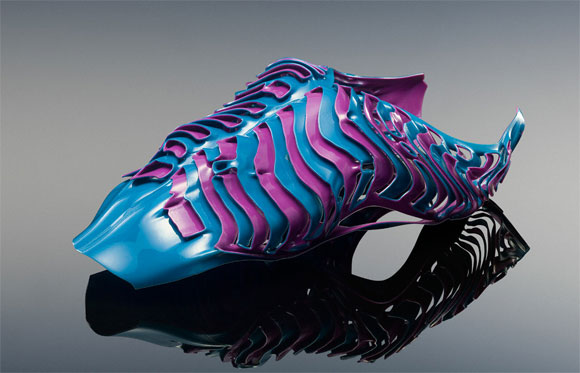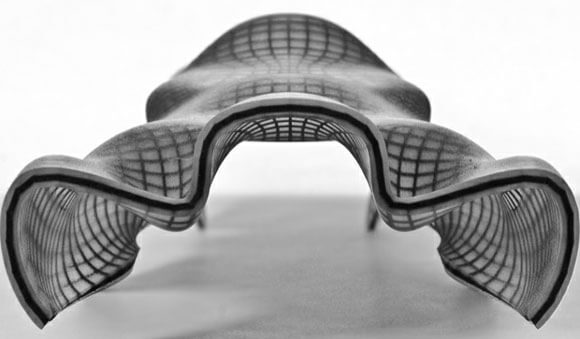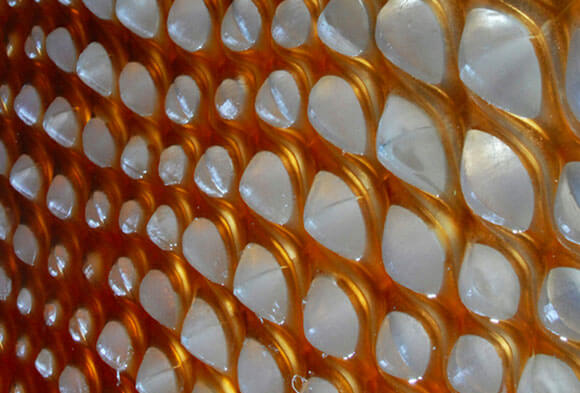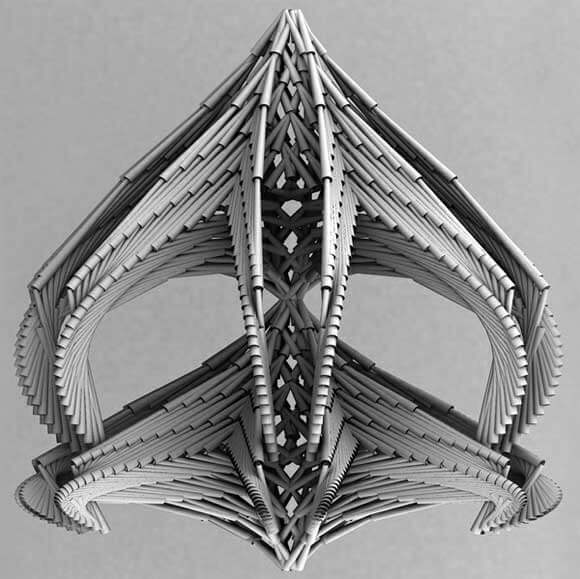Chris Davies
Plastic Logic revealed a big shift in strategy last month, pushing its own flexible plastic-based epaper displays for third-party products, and its new video-capable color panels are top of the agenda. SlashGear caught up with Plastic Logic at the company’s Cambridge, UK, R&D center today to see one of the very first demonstrations of the new screen, a flexible panel that can support color video playback at up to 12fps. Read on for the video demo.
Video-capable e-paper has been something of a holy grail for ereader manufacturers, who so far have had to deal with the flickering page-refresh of existing E Ink screens. Plastic Logic’s display isn’t up to the sort of framerates you’d want for true video playback – that demands around 25-30fps – but it’s sufficient for animations and reasonable clips, or indeed Flash content on websites.
Plastic Logic showed us two versions of the screen technology, one a color panel that uses a special filter layer over the top of the e-paper screen itself, and another smaller, monochrome version better suited to a pocket-sized mobile device. Both use the company’s unique plastic transistor technology, meaning they’re virtually indestructible: you can bend and twist them, drop them, or hit them with hammers, and they’ll still keep working. Right now, the color screen shows six smaller video preview panes, something Plastic Logic says is down to its own test driver equipment, rather than a limitation of the panel technology itself.
Although streaming video on an ereader is one obvious possibility – and Plastic Logic confirmed it’s in talks with various ereader manufacturers, though declined to name specific names – another benefit of the faster refresh rate is more natural navigation on a tablet-style device. Flicking between pages using a touchscreen overlay layer, something else Plastic Logic can integrate, would thus allow you to see previews of each page’s content, much as paging through a document on an iPad does today.
http://news.techworld.com/applications/3366665/plastic-logic-demos-video-animation-on-electronic-paper/
Plastic Logic demos colour video animation on electronic paper
The development could lead to wider use of e-paper in low-power devices
By Sophie Curtis | Techworld
Plastic electronics
company Plastic Logic has demonstrated colour video animation on a
flexible plastic display, which it claims is the first example of an
organic thin-film transistor (OTFT) driving electronic paper at video
rate.
The demonstration proves that the potential uses of electronic paper extend far beyond monochrome text-based e-readers to more sophisticated tablet-style devices that can run colour video, while still keeping power consumption low.
Electronic paper only draws power when the display is updated, making it very energy-efficient. It also reflects light in the same way as ordinary paper, so there is no need for a backlight.
Paul Cain, Plastic Logic's senior manager for technology, said that
playing video on electronic paper uses more power than static images,
because it is updating all the time, but still uses less power than an
equivalent display with an LCD backlight.
At the moment, the frame frequency of videos running on Plastic Logic's plastic electronic displays is fairly low (12 frames per second), because increasing the speed can reduce the contrast of images. However, it is sufficient for simple video clips, such as Flash content on websites, and Cain said the company was working to improve this.
“Ultimately it’s a trade off between speed and contrast,” said Cain. “Our partners who provide the media are very interested in working on this as well.”
Plastic Logic's plastic electronic displays are not only low-power but also thin, light, flexible and extremely robust. This opens up a range of possible uses, including wearable gadgets such as digital watches and hospital wristbands, rugged educational tools, electronic billboards and ID cards.
The ability to render colour images and the low power consumption of e-paper displays, which results in extended battery life, also makes them attractive for business use.
During an open day at its R&D centre in Cambridge, Plastic Logic also showed how an e-paper display could be used as a smartphone accessory, allowing the user to wirelessly transmit images and attachments from the phone to a portable lightweight e-paper screen for larger viewing in seconds.
The company said it was currently working with a number of smartphone companies to grow this concept.
Last month, Plastic Logic announced it was abandoning plans to manufacture its own e-readers, deciding instead to to license its flexible display technology and software to OEMs, system integrators, and device manufacturers.
“Some of our discussions are with e-reader companies where they are
interested in rugged or flexible versions of their products,” Plastic
Logic CEO Indro Mukerjee told Techworld.
“We along the way have worked out how to optimise the front-of-screen performance on EPDs using our backplane, and therefore we have a number of elemental software parts which we could also take to market as licensing solutions,” he added.
Earlier this month it was announced that Plastic Logic is sharing in a £20 million round of funding from the Technology Strategy Board for collaborative research and development related to electronics, photonics and electrical systems.
The demonstration proves that the potential uses of electronic paper extend far beyond monochrome text-based e-readers to more sophisticated tablet-style devices that can run colour video, while still keeping power consumption low.
Electronic paper only draws power when the display is updated, making it very energy-efficient. It also reflects light in the same way as ordinary paper, so there is no need for a backlight.
At the moment, the frame frequency of videos running on Plastic Logic's plastic electronic displays is fairly low (12 frames per second), because increasing the speed can reduce the contrast of images. However, it is sufficient for simple video clips, such as Flash content on websites, and Cain said the company was working to improve this.
“Ultimately it’s a trade off between speed and contrast,” said Cain. “Our partners who provide the media are very interested in working on this as well.”
Plastic Logic's plastic electronic displays are not only low-power but also thin, light, flexible and extremely robust. This opens up a range of possible uses, including wearable gadgets such as digital watches and hospital wristbands, rugged educational tools, electronic billboards and ID cards.
The ability to render colour images and the low power consumption of e-paper displays, which results in extended battery life, also makes them attractive for business use.
During an open day at its R&D centre in Cambridge, Plastic Logic also showed how an e-paper display could be used as a smartphone accessory, allowing the user to wirelessly transmit images and attachments from the phone to a portable lightweight e-paper screen for larger viewing in seconds.
The company said it was currently working with a number of smartphone companies to grow this concept.
Last month, Plastic Logic announced it was abandoning plans to manufacture its own e-readers, deciding instead to to license its flexible display technology and software to OEMs, system integrators, and device manufacturers.
“We along the way have worked out how to optimise the front-of-screen performance on EPDs using our backplane, and therefore we have a number of elemental software parts which we could also take to market as licensing solutions,” he added.
Earlier this month it was announced that Plastic Logic is sharing in a £20 million round of funding from the Technology Strategy Board for collaborative research and development related to electronics, photonics and electrical systems.





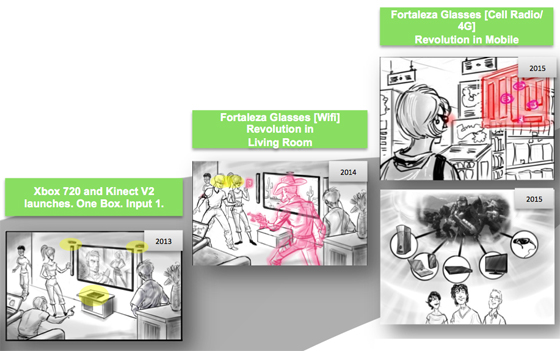


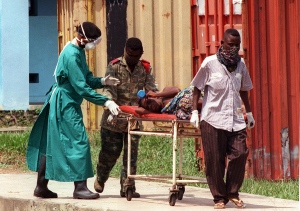

 Associate Professor of Psychology Kevin Myers holds a rat in his lab at Bucknell.
Associate Professor of Psychology Kevin Myers holds a rat in his lab at Bucknell.

